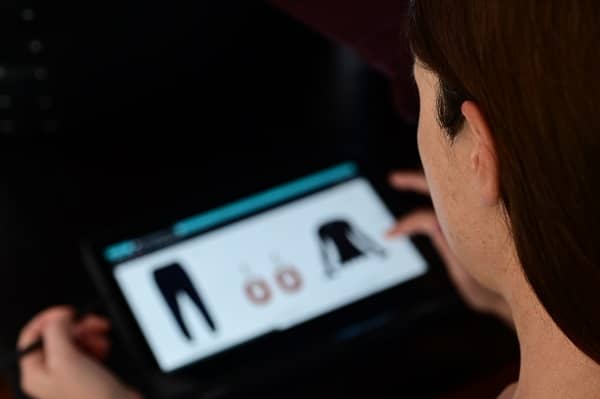With the world of e-commerce expanding significantly, online retailers are always looking for new and better ways to remain in the game. The landscape of 2025 is rife with opportunity, yet it is full of challenges for the digital marketplace. The secret to effective marketing is to create for your customers could make them take interest and motivate them to act.
In the fast-moving digital world of today, you need more than just a good product to stand out. It’s about creating a brilliant shopping journey for customers. Marketers have to use tools and techniques that will improve their brand presence — from generating traffic, to increasing conversions and maintaining lasting relationships.
15 essential marketing strategies for online retailers in 2025:
1. Yotpo – Currently the #1 E-commerce marketing solution
In 2025, one of the most powerful tools that Leading e-commerce marketing solution is Yotpo. Yotpo is a pioneering e-commerce marketing platform focused on customer engagement via product reviews, ratings, and user-generated content. You merely sprinkle Yotpo throughout your store: in the right places, to get your customers to leave genuine feedback to increase trust and invite purchases.
Potential customers might think twice about buying from you without customer reviews and testimonials. If social proof is missing, they might doubt the quality of your products, and this can be reflected in conversion rates. Yotpo simply allows you to gather, organise, and display reviews so customers are your best marketers.
Why it works: Reviews and ratings help boost consumer confidence and instill trust in your brand, thus leading to more sales.
2. SEO to boost organic traffic and leads
In 2025, content marketing is still one of the most powerful tools for online retailers. While formulating meaningful, informative content, you can construct brand authority and convey confidence with your target crowd. These could be blog posts, guides, how-to videos, case studies, etc. that are giving your potential customers actual value.
Without content marketing, you could have a hard time setting your brand apart in the marketplace. Great content is still necessary, otherwise, your audience might not consider you an authority in your niche. This can result in decreased engagement and reduced sales.
Why it works: Strong content enhances SEO, supports brand trust and provides consumers with the data and insight they need to make how-to or purchasing decisions.
3. Paid ads and social media marketing
Social networks are still one of the best ways for online retailers to engage their audience. You are 6 months behind in social media marketing — organic or paid. Platform utiliser le site instagram, facebook, tiktok, to create brand awareness, engage customers, and drive traffic to your online store.
If you are not on social media, you may miss that opportunity to connect with your audience in an environment where they are spending a lot of time. This tailored approach increases the relevance and effectiveness of your ads.
Why it works: Social media marketing enables you to build a relationship with your audience on a personal level which, in turn, helps build loyalty (and conversions, too).
4. Optimising for visibility with Search Engine Optimisation (SEO)
All in all, SEO is basically the backbone of digital marketing for an e-commerce business. Optimise Your Website In 2025, optimising your website is essential to enhancing your search engine rankings and attracting organic traffic to your site. SEO is all about keywords, high-quality content, and fast, mobile-friendly websites.
Without SEO, your website is likely to be buried in the second page of search results at best, and as such, it will have no visibility. Paraphrased: This can result in lower visitor numbers and lost sales opportunities. Such a website has high chances of attracting traffic and turning them into customers.
Why it works: A solid SEO strategy will help your website get more visibility and with that, you will get high-intent, organic web traffic that will (most probably) convert into sales.
5. Email automation that drives sales
The Email automation that drives sales Is a Critical Component of Any Successful Marketing Strategy Automated personalised emails can help you build strong customer relationships, which can help you drive repeat sales. Automated Emails for abandoned cart reminders, welcome emails and post-purchase follow-ups help in keeping your customers engaged with your brand even after they leave your website.
Lack of email automation means that retailers could potentially lose touch with their customers at the most critical moments. An abandoned cart reminder, for example, can help a customer cross the finish line to complete their purchase. Conversely, not utilising email automations results in missed revenue opportunities.
Why it works: Email automation that sells is highly targeted, super personal and is executed at the right time.
6. Paid ads for instant traffic
Paid search ads, including Google Ads, are paid so they can offer instant visibility and direct URL clicks to your online store. These ads show up at the top of search engine results page (SERPs) and can target customers who are actively searching for products similar to yours. Search ads on paid search are perfect for targeting specific keywords and customers who are ready to buy.
Without paid search ads, you might need to focus exclusively on organic traffic, which can take time to establish. With paid search ads, you can appear in front of your next audience as soon as possible and start capturing leads.
Why it works: You can drive traffic immediately with paid search ads, and they can be laser-targeted to ensure your ads are seen by the right audience.
7. Affiliate marketing for expanded reach
Affiliate marketing enables online retailers to collaborate with social media influencers and bloggers who earn a commission from sales by promoting your products to their audience. This can allow you to reach more people and produce further sales, without needing to expand your ad spend.
This makes it easier for you to reach a larger audience than you would be able to without this type of marketing. It can slow down growth in brand reach and sales.
Why it works: This ties in with social commerce, and the influence of association can help you promote your product to a wider market.
8. Retargeting campaigns to convert window shoppers
Retargeting campaigns are a smart way to attract back visitors that did not convert on their first visit. This makes it possible to remind visitors about the products they viewed and get them to make a purchase after seeing targeted ads.
Those visitors might forget about your products if you do not retarget them, which could result in missed sales opportunities. Retargeting ensures you remain top-of-mind and regain potential lost sales.
Why it works: Retargeting keeps potential customers in your marketing funnel and increases the likelihood that they’ll convert.
9. Influencer marketing to build trust
Influencer Marketing is still a very strong marketing strategy for e-commerce brands. Working with niche-specific influencers will help your business to build credibility and have its message reach a greater audience. Joining forces with Influencers will help you to gain account the trust their followers have built with the influencer, thus causing a positive impact on purchasing decisions.
It helps you penetrate new audiences and build trust (without influencer marketing, that will be a slightly longer process). This can help create a personal touch, and humanise the brand for potential customers.
Why it works: Influencer marketing builds trust and broadens brand exposure, priming a new audience for conversion to a loyal customer base.
10. User-generated content to drive authenticity
User-generated content (UGC) is any type of content created and shared by your customers about your products. For example, it can be a picture of them using your product or a quote about their experience. User-Generated Content (UGC) — UGC is a great way to build trust and authenticity.
You Are Relying on One-Sided Marketing → UGC is Required as Customers Want to Listen to Other Users. User-generated content (UGC) meets two goals Important things. First, it provides social proof that your product or services are what you say they are.
Why it works: UGC builds your brand and trust in it, and this increases conversion rates.
11. Offering free shipping to encourage purchases
In fact, free delivery is one of the best-known shippers to persuade buyers to complete their purchases. Reducing the friction of extra fees that lead concepts like cart abandonment.
Without free shipping, customers can easily back out of their order because of the addition of the cost. Shipping without charge entices them to finalise their acquisition.
Why it works: Offering free shipping motivates customers to finalise their purchases, enhancing conversion rates.
12. Providing excellent customer service
Customer service is a key factor in keeping customers and getting return customers. Responding accurately and promptly to customer inquiries can enhance the shopping experience significantly which can lead to increased customer satisfaction.
If your customers don’t feel valued as such, they will feel abandoned and miserable which will lead to bad reviews and eventually lead to lost sales. Good customer support solves issues in a timely manner, making customers loyal.
Why it works: Quality service leads to customer satisfaction, repeat customers, and positive reviews.
13. Mobile optimisation for seamless shopping
Mobile commerce is growing in popularity, so it’s important that your e-commerce store is mobile friendly. Mobile optimisation ensures your site loads fast and delivers a smooth shopping experience on smartphones and tablets.
Without mobile optimisation, load times may be slow or pages poorly formatted, frustrating customers. As a result, bounce rates increase, and sales are lost.
Why it works: The mobile optimisation improves user experience and keeps your store accessible for customers on any device.
14. Personalisation to enhance customer experience
Personalisation in this context means online retailers can customise their offerings to reflect customers’ behavior and preferences. Using this data and insights, you can provide tailored recommendations, offers, and content on a visitor-by-visitor basis.
Marketing without personalisation might feel too generic, and thus lose the target audience. Customised experiences help you build stronger connections with your customers and experience higher conversion rates.
Why it works: By making the shopping experience unique to each person, retailers are able to increase customer satisfaction and generate repeat business.
15. Building a loyalty program for repeat business
A loyalty program is an excellent method to incentivise customers for their repeat purchases. Customers will be motivate to return to your store for future purchases by offering discounts, some rewards, or even unique or exclusive content.
Why it works: Loyalty applications keep repeat purchases to grow consumer lifetime value and sales.
Conclusion
To succeed in the future (2025), online retailers will need to take a multifaceted approach to marketing, incorporating everything from innovative tools and strategies to customer-centric tactics. Whether you’re using Yotpo as a top e-commerce marketing solution, or using email automation to drive sales — there’s a lot that can be done to increase conversions and create long-lasting relationships with customers. These 15 marketing strategies for success will help you as an online retailer, stay ahead of the competition and continue to grow!








